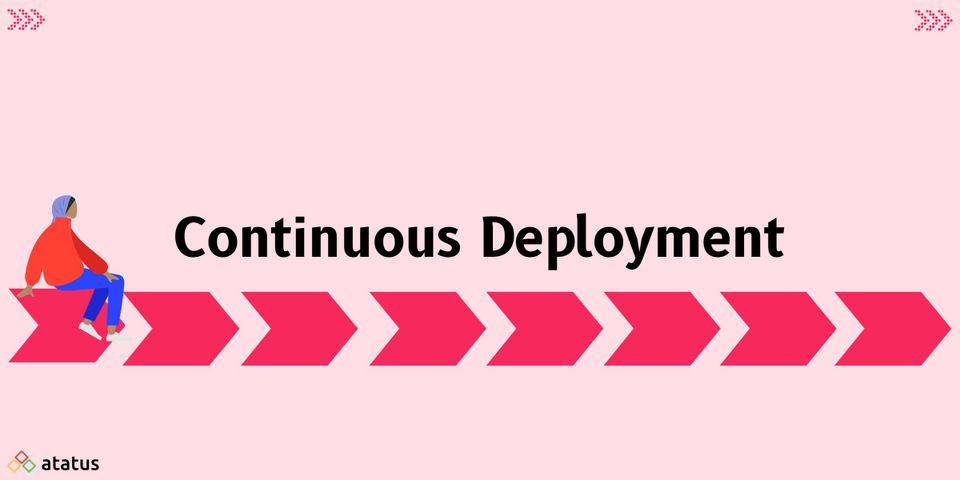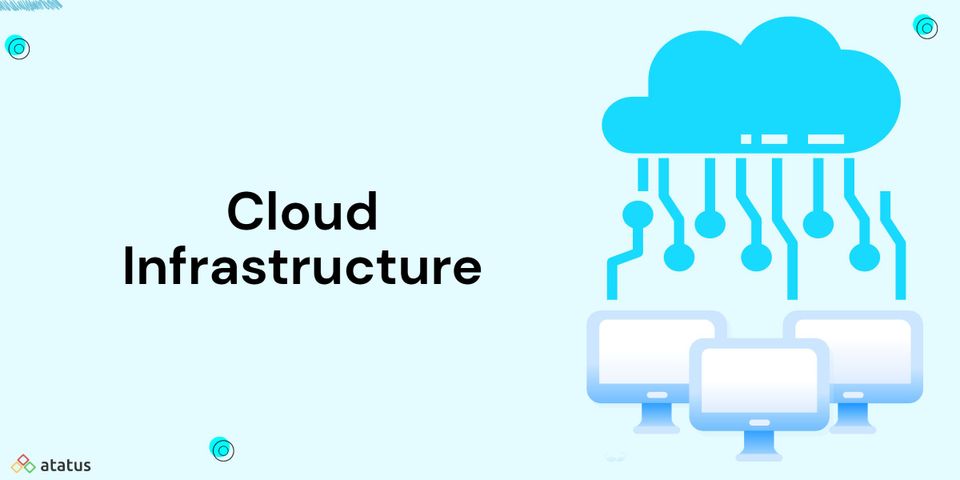The software release is an engineering discipline, not an art. Continuous Deployment is an outgrowth of Continuous Integration that allows us to catch issues sooner.
We will cover the following:
- What is Continuous Deployment?
- Process of Continuous Deployment
- Benefits of Continuous Deployment
- Challenges in Continuous Deployment
- Tools for Continuous Deployment
What is Continuous Deployment?
Continuous deployment (CD) is a software development approach in which code changes to an application are deployed into the production environment automatically. When a team uses Continuous Deployment, it implies that every time the codebase sees a change, it goes through a set of tests before goes to live, and an automatic check gate authenticates the changes. Changes in the production environment are visible to developers in real-time because it is automated. This allows for quicker response, allowing the team(s) to inspect and adjust in real-time.
A feedback loop is included in the Continuous Deployment pipeline, which necessitates continuous monitoring of the process in order to spot issues and take corrective action. The Business gains a competitive advantage by automating the entire process (from code contribution to go live) because their Time to Market (TTM) is always shorter.
Teams that use CI/CD practices to create software are frequently cross-functional and work in a collaborative atmosphere, which fosters a DevOps culture. The tools available in the process make migrating code from one machine/environment to another simple and stress-free.
For businesses aiming to extend their applications and IT portfolio, continuous deployment has various advantages. First, it reduces time to market by reducing the time gap between coding and customer value—which can range from days to weeks to months. Regression tests must be automated in order to do this, removing the need for costly manual regression testing.
Process of Continuous Deployment
The continuous deployment pipeline is made up of a set of processes that take the code from development to production. All of the steps are automated, and one step's output feeds into the next. Continuous monitoring ensures that the code is bug-free and meets the pre-approved quality check gates.
According to the Scaled Agile Framework (SAFe), the pipeline may be explained in four simple steps:
Step 1: Deploy
Continuous Integration comes to an end here, and Continuous Deployment begins. When developers release a new piece of code to the production environment, the deployment process is triggered automatically, and we refer to this as a "build." In continuous deployment, the entire process from code commit to final deployment is ideally a one-click procedure.
These seven practices can help you increase the efficiency of your software deployment:
- Version Control – Keeping environments under version control allows for quick deployment and recovery
- Blue/Green Deployment – A method for automatically transitioning between two environments, one for deployment and the other for active use
- Dark Launches – The ability to deploy to a production environment without exposing end users to the functionality
- Feature Toggles – Away for making dark launches easier by including toggles in the code that allow users to choose between old and new functionality.
- Selective Deployment – The ability to deploy to specified production environments while excluding others based on factors like region, user role, and so on
- Self-service Deployment – When automation deployment isn't complete, self-service deployment allows solutions to be moved from staging to production with a single command
- Deployment Automation – The ability to deploy a tested solution from check-in to production automatically
Step 2: Verification
In Continuous Deployment, it's critical to test the build/application before releasing it. Last-minute verifications frequently reveal flaws that were overlooked earlier in the process and must be addressed right away to have the greatest impact. Various tests are carried out to ensure that the application performs as expected and that the production environment is not contaminated.
The verification process involves four practices:
- Test Automation – The ability to automate testing on a regular basis
- Production Testing – The ability to test solutions in production while they are still in a state of ‘darkness'
- Test Data Management – In order to ensure consistency in automatic testing, test data should be kept in version control
- Testing Non-functional Requirements (NFRs) – Before a system is released, it must be thoroughly tested for security, reliability, performance, maintainability, scalability, and usability
Step 3: Monitor
Constant monitoring is a critical technique in the CD process for ensuring compliance and mitigating potential risks. It aids in visualizing the performance of your application and any other parameter chosen by the project leaders. Monitoring improves the consistency of claims and the responsiveness of teams.
The monitoring process is aided by these four aspects:
- Full-stack Telemetry – The capacity to keep an eye on a system's entire stack for potential issues
- Visual Displays – Displaying automated measurements with tools
- Federated Monitoring – In the system, unified monitoring across applications gives a comprehensive view of problems and performance
- User-behaviour Tracking – Tracking the user's experience to collect qualitative and quantitative data and analyse the interactions between the user and the application
Step 4: Response and Recovery
For business agility, the ability to respond is crucial. The Mean Time to Resolve (MTTR) is a metric that measures your team's preparedness to respond to and resolve issues. In agile software development, MTTR vs. MTTF is essential and decision-influencing indicators. When an issue or incident is detected, immediate action should be taken because otherwise, business operations may be harmed or, worse, the brand value may be jeopardized. The problem's root cause must be recognized and resolved.
Five practices that can help your team be more responsive:
- Proactive Detection – A practice of proactively introducing flaws into a solution in order to detect prospective problems and scenarios before they exist
- Collaboration between Team – A collaborative mentality across the Value Stream to identify and resolve issues as they emerge
- Session Reply – The capacity to replay end-user sessions in order to investigate occurrences and pinpoint issues
- Rollback and Fix Forward – The ability to easily rewind a solution to a previous environment, as well as to swiftly correct a problem through the pipeline without having to rollback
- Immutable infrastructure – This concept suggests that teams never make uncontrolled changes to the production environment, but rather manage infrastructure modifications through the Continuous Delivery pipeline
Benefits of Continuous Deployment
Continuous Development and DevOps can result in lightning-fast releases, but it isn't the only benefit those businesses are finding from CD adoption. Here are a few of the benefits of continuous deployment:
- Quick New Releases
The most important feature of continuous deployment is that it allows development teams to deliver new releases into production as soon as feasible. - Secure
Releases are less dangerous because they are thoroughly tested and all bugs are addressed prior to release. - Rapid Feedback Loop with Customers
A shorter feedback loop with the consumer equals more frequent updates to your application. Developer teams can examine the impact of a new modification on user behaviour or engagement using cutting-edge monitoring tools and make adjustments as needed. - Continuous Improvements
Customers can see continual improvements due to Continuous Deployment. - Increases Workforce Productivity
Continuous deployment automates the majority of software development tasks. The developer does not need to be concerned with the integration, deployment, or testing of the code.
Challenges in Continuous Deployment
- Resistance
Employees may find it difficult to transition from traditional methods to Continuous Deployment. Developers are expected to enhance their knowledge of operations tasks, and Ops are expected to keep up with the pace that the Devs and Business demand. The organization faces a problem as a result of its opposition. - Structure
Some may believe that having more developers and larger teams would speed up software development. Using larger teams, on the other hand, can stifle the transformation. Deployment cycles will be delayed by larger teams with weak communication channels. This could cause issues with coordination, creativity, and version control. - Tools
Continuous Deployment is not a new process, yet it is. Both knowing too many and not understanding any tools might be problematic. For a successful implementation, the teams must have sufficient knowledge of the tools, their setups, and combinations. Finding and implementing the proper tool with the exact configurations and combinations could be tricky. - Architecture
Monolithic architecture is used by some organizations, which is a major hurdle to achieving Continuous Deployment. It will be difficult to work on a feature without affecting others because the code and database of monolithic systems are often intertwined. It's not always easy to recognize the impact until it's too late. It will be difficult to change the architecture.
Tools for Continuous Deployment
Our top seven picks for the best continuous deployment tools for your project are as follows:
- DeployBot – Without the requirement for a full Continuous Integration system, it makes deployment simple, fast, and easy.
- GitLab – It's made for Continuous Deployment, and it maintains projects using a user-friendly interface.
- AWS CodeDeploy – A completely managed software deployment service for computing services like AWS Lambda, Amazon EC2, AWS Fargate, and servers.
- Octopus Deploy – It's a tool for managing and automating code releases and deployments.
- Bamboo – This tools that assist in integrating and configuring automated builds, testing, and releases into a single DevOps pipeline.
- Jenkins – It's an open-source automation server that lets developers build, test, and deploy applications with confidence.
- TeamCity – This tool supports VE and runs on all operating systems, and it works with all known testing frameworks and code QA tools.
Conclusion
For modern engineering organizations, Continuous Deployment can be a useful tool. Integration, delivery, and deployment are the three steps that make up the overall ‘continuous pipeline.' The genuine experience of continuous deployment is automation to the point where code is deployed to production, tested for accuracy, and either retracted or accepted if it is incorrect.
Monitor Your Entire Application with Atatus
Atatus provides a set of performance measurement tools to monitor and improve the performance of your frontend, backends, logs and infrastructure applications in real-time. Our platform can capture millions of performance data points from your applications, allowing you to quickly resolve issues and ensure digital customer experiences.

Atatus can be beneficial to your business, which provides a comprehensive view of your application, including how it works, where performance bottlenecks exist, which users are most impacted, and which errors break your code for your frontend, backend, and infrastructure.





